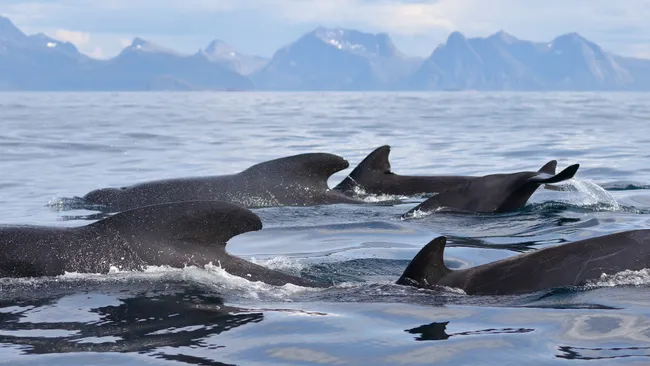The population of the critically endangered North Atlantic right whale increased by five individuals, bringing the estimated total to 372 in 2023, according to an Oct. 22 report.
The North Atlantic right whale (Eubalaena glacialis) population has declined since 2011. However, the slight rise in recent years may signal some stability for these ocean giants, which can grow up to 16 meters (52 feet) in length and weigh as much as 63 metric tons, but they remain on the edge of extinction as threats to their survival, such as fishing and ocean traffic, persist.
“To see the population estimate increasing gives us hope that what felt like a free fall over the past decade may be behind us,” Heather Pettis, chair of the North Atlantic Right Whale Consortium that produced the report, said in a statement.
A bit over a decade ago, in 2011, the North Atlantic right whale population was estimated at around 483, but by 2020 it had plummeted to 358. More than a fourth of the population was lost mostly to human-induced deaths such as ship strikes and entanglements with fishing gear.
More than 80% of North Atlantic right whales have been entangled in fishing gear at least once in their lives, researchers found in a 2018 survey. But death isn’t the only risk: the stress and extra energy from entanglement reduces the likelihood that a female will successfully give birth. Many more surviving whales have visible scars.
“We are losing right whales at unsustainable rates and unfortunately, annual calving rates remain under the necessary threshold to grow the population,” wrote Kathleen Collins, the senior marine campaign manager at the International Fund for Animal Welfare. “A lasting recovery is impossible if current trends and mounting threats continue. This population of whales is unhealthy, stressed, and unable to save themselves,” she added.
Scientists detected 11 calves born in 2023, but for the species to fully recover, there need to be 50 or more calves born every year. To reach this number, the female whales need to be alive and healthy. While North Atlantic right whales can live up to 70 years, females currently reach an average age of 45.
Reducing entanglement and vessel strike risk by 25% halves the probability of quasi-extinction (a scenario where a species is doomed to extinction if there aren’t enough reproducing females to recover the species) in 100 years, a recent study found.
Whale researchers and conservationists point to measures such as introducing speed restrictions along the coast to reduce vessel strikes and deploying ropeless fishing gear to reduce injury and death for North Atlantic right whales.
This article by Shanna Hanbury was first published by Mongabay.com on 24 October 2024. Lead Image: A right whale called Juno and calf sighted off Cane Island, South Carolina, U.S., on Nov. 28, 2023. Image courtesy of Clearwater Marine Aquarium Research Institute, taken under NOAA permit #26919..
What you can do
Help to save wildlife by donating as little as $1 – It only takes a minute.







Leave a Reply